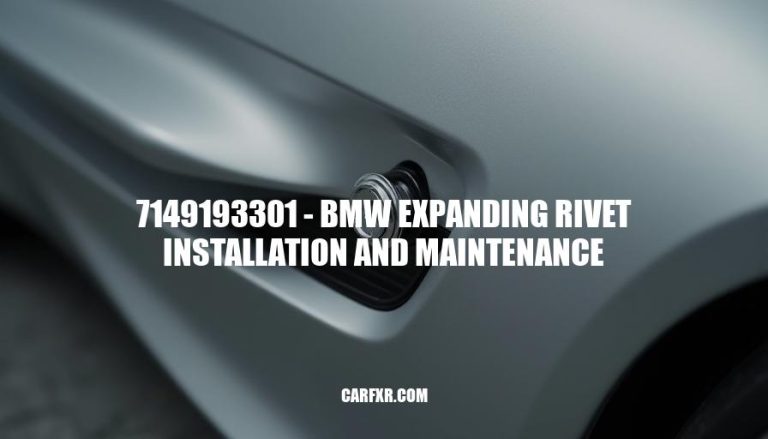
The BMW Part Expanding Rivet 07149193301 is a really important piece in cars. It helps keep panels and trims securely attached inside the vehicle. This means they won’t come loose even when the car moves or vibrates, keeping everything looking good and safe.
The BMW Part expanding rivet 7149193301, also known as the lower panel rivet or trunk lid trim rivet, is a genuine BMW part designed for various BMW models from 2010 to 2021.
Dimensions: The part weighs approximately 0.40 pounds and has a length of about 1.5 inches (38.1 mm).
Material Composition: This rivet is made from high-quality steel, ensuring durability and strength. The material is resistant to corrosion and wear, making it suitable for long-term use in automotive applications.
Unique Features:
Expanding Mechanism: The rivet features an expanding mechanism that allows it to securely fasten panels and trims without the need for additional tools.
Direct Replacement: It serves as a direct replacement for the original rivet, ensuring a perfect fit and maintaining the vehicle’s aesthetic and functional integrity.
Versatility: This rivet is compatible with multiple BMW models, including the 2010-2021 BMW 328i, 2010-2016 BMW 528i, and 2015-2018 BMW M3, among others.
These features make the BMW Part expanding rivet 7149193301 a reliable and essential component for maintaining the integrity of various BMW vehicle parts.
To install the BMW Part expanding rivet 7149193301, follow these steps:


